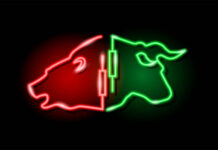Markets
The first two sessions of the trading-shortened Easter week developed orderly, with markets recovering somewhat from last week’s mayhem. News flow of the last 24 hours or so suggests that the risk rebound will face a tough test. Markets initially seemed to turn a blind eye to them, until the Trump administration extended the list of export controls to Nvidia’s tailormade H20 chips for China in another escalation of the trade conflict between the US and China. Other worrying headlines included US probes into semiconductor, pharmaceutical and possibly critical minerals imports which are a prelude of more sectoral tariffs, China ordering airlines not to take further deliveries of Boeing jets, rumours on scant progress being made in trade talks between the EU and the US and disappointing Q1 ASML earnings. The negative trade headlines start to outweigh the reprieve coming from the 90-day pause in reciprocal tariffs and from some product exemptions (eg certain electronics or car parts). Asian stock markets dive 1% to 2% lower this morning with European and US equity futures also spelling trouble ahead. In last week’s market sell-off, German Bunds significantly outperformed US Treasuries. We expect those dynamics to hold as investors come to terms with higher US risk premia. In the same vein, we stick to our positive view for EUR/USD. In yesterday’s vacuum, the pair tested last week’s broken resistance (now turned into support) at 1.1274/76. That level held with the pair currently changing hands around 1.1370. The Japanese yen outperforms this morning with USD/JPY testing the YTD low this morning just above 142. The Swiss franc is also heading back to the EUR/CHF 0.9220/10 support area.
Today’s eco calendar contains March US retail sales and industrial production figures, together with a $13bn 20-yr US bond auction and a keynote speech by Fed Chair Powell on the economic outlook. Especially the latter could hurt sentiment further as we don’t expect Powell to cave to market expectations of growth-supporting rate cuts, sticking to the anti-inflation line instead. US Treasuries could in such scenario lose new ground. This morning’s UK inflation numbers (March) were slightly lower than feared (0.3% M/M & 3.4% Y/Y for headline; core CPI 3.4% Y/Y; services CPI 4.7% Y/Y) and suggest that the BoE for now can stick to its quarterly cutting pace in May. EUR/GBP rises from 0.8525 to 0.8570 this morning.
News & Views
China’s economy expanded by 1.2% q/q and 5.4% year-over-year in the first quarter of 2025. The solid growth was supported in part by frontloading exports before widely expected tariffs kicked in. In the accompanying monthly data set, industrial production for example quickened sharply in March to 7.7% y/y. Retail sales also accelerated and more than expected. The 5.9% in March was the fastest pace since December 2023. Since US president Trump’s Liberation Day, however, circumstances dramatically changed and makes repeated solid expansions increasingly difficult. China’s statistics bureau noted that “the external environment is becoming more complex and severe, the drive for growth of effective domestic demand is insufficient, and the foundation for sustained economic recovery and growth is yet to be consolidated.” Calls on the government for additional fiscal stimulus will likely continue ahead of the Politburo meeting end of April. China’s yuan this morning shrugs at the decent but outdated GDP numbers and is caught in the broader risk off move. USD/CNY jumps to 7.327.
Hungary’s freshly appointed central bank deputy governor Kurali vowed to conduct an orthodox monetary policy during his confirmation hearing before parliament yesterday. “In the current economic environment, we need an interest rate policy that can guarantee price stability in tandem with financial and market stability.” He said the central bank needs to maintain a positive real interest rate to have inflation slowing down to the 3% +/- 1 ppt target range. The central bank’s policy rate today stands at 6.5% compared with 4.7% inflation (March). Kurali also noted the government needs to reduce deficits and debt in order to have sustained economic growth. Rating agency S&P last week downgraded Hungary’s rating outlook to negative from stable over fiscal concerns after PM Orban ramped up pre-election spending. Hungary’s rating is just one notch above junk (BBB-). The Hungarian forint appreciated after Kurali’s comments but continues to trade at weak levels around EUR/HUF 408.












